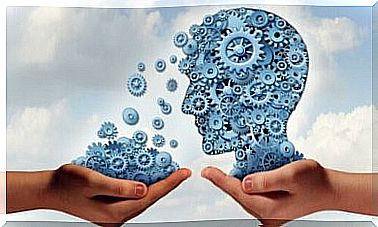Eudaimonia And Hedonism: Two Ways Of Experiencing Happiness

What is happiness? Everyone talks about it and experiences it, but it’s really hard to define it. Many philosophers and thinkers of all kinds have tried to investigate the mysterious meanders of this emotion; among them we can mention Aristotle, who thought that man’s ultimate goal was happiness, or Epicurus, who believed that it was the foundation of life. In this article we present the concept of happiness according to psychology; in essence, we will talk about eudaimonia and hedonism.
Psychology, based on philosophical literature and scientific experimentation, has stated that happiness can be experienced in several ways. It’s easy to think of happiness by going to a party with friends or enjoying a great vacation, but many people also find happiness in their efforts, studying and pursuing a certain career, learning a language, etc. This is where the concepts of eudaimony and hedonism come into play.
Before going on to explain these two psychological terms, it is important to clarify some details. Eudaimonia and hedonism are two terms that come from philosophy; we find them already in Aristotle and Epicurus when they tried to explain happiness. And, although psychology has appropriated these terms, the conception of them in it is quite different. Before proceeding, therefore, it is important to know that the definition we use in this article comes from a more psychological than philosophical side.

Eudaimonia and hedonism
Hedonism: happiness based on pleasure
Hedonism is the most tangible happiness, it is the joy we experience when we carry out rewarding activities. It is about the feeling of pleasure and the motivation to avoid discomfort. We can say that this type of happiness is based on the following characteristics:
- Pursuit of Pleasure : This is the central aspect of hedonism. It consists in the search for the stimulation of the senses and emotions. Enjoying time with friends, going on a trip, going to a concert, etc.
- Perception based on an emotional balance : we interpret hedonism in our lives by taking a balance of our daily emotions. In this way, if we are used to experiencing more pleasant emotions than unpleasant, we will experience greater hedonistic happiness.
- Maintaining satisfaction with one’s life : in order to enjoy hedonism, it is necessary to perceive the environment in which we move as pleasant. If we have problems with our family, friends, work, etc … these will generate anxiety that will compromise our hedonistic happiness.
- Pursuit of Desires and Needs : Hedonism acquires pleasure through the attainment of our desires and needs. Realizing our desires and satisfying our needs brings us pleasant emotions that result in hedonistic happiness.
- Short-term happiness : An essential aspect of hedonism is its gaze on the present or the most immediate future. We are talking about pleasure or spontaneous happiness, which arises as a result of the realization of certain behaviors. When the stimulus that provokes it recedes, the hedonistic happiness dissipates.
- High Intensity : Hedonistic happiness consists of a highly rewarding and stimulating emotion that is experienced with great intensity and enthusiasm.

Eudaimonia: happiness based on personal development
Many of our behaviors do not cause immediate happiness, they require effort and, at certain times, we also experience negative emotions typical of this type of motivation.
Despite this, we continue to carry out our conduct with energy, and we are even satisfied with it. This is thanks to the fact that such behaviors allow us to carry out a personal development that is experienced with eudaimonic happiness. Examples of such eudaimonia can be making a career, learning a new language, discovering other cultures, exploring oneself, etc.
To define eudaimonia, we can use the following characteristics :
- Pursuit of personal development : this is the key aspect of this form of happiness. Eudaimonia is the motivation that makes us grow. It is the satisfaction that arises when we are proud of our cognitive, moral, emotional growth, etc.
- Achievement of Goals and Purposes : The degree of intensity of Eudaimonic happiness will depend on the achievement of our goals and purposes. Achieving our goals will bring us this happiness that spurs us to grow.
- Effort and motivation : they are the engines of our self-realization. Since, on many occasions, our goals and purposes will put us in trouble and cause us to experience unpleasant emotions, we need to strive and motivate ourselves to achieve eudaimonia.
- Long-term happiness: it is happiness represented by self-satisfaction. The ability to observe oneself and to be proud of one’s personal growth. It presupposes more a pleasant perception of oneself than a specific temporary state (as in the case of hedonism).

Conclusions
Eudaimonia and hedonism: which is better? The answer is that both of these forms of happiness are usually a source of motivation in our lives. They are respectively the ones in charge of encouraging personal development and pleasant behaviors. In this sense, it seems essential to find a personal balance between the two, so that one does not end up becoming an obstacle for the other.
The consumer society we live in leads us to base our lives on hedonism. We consume our resources immeasurably in short-term pleasures and forget about our personal development or seek it indirectly through this consumption. A large part of the population detests their working and professional life and the only satisfaction they can find lies in the hedonistic pleasures. It is important not to forget our self-realization, as it is the only way to achieve eudaimonia.









